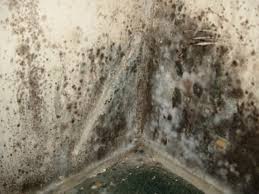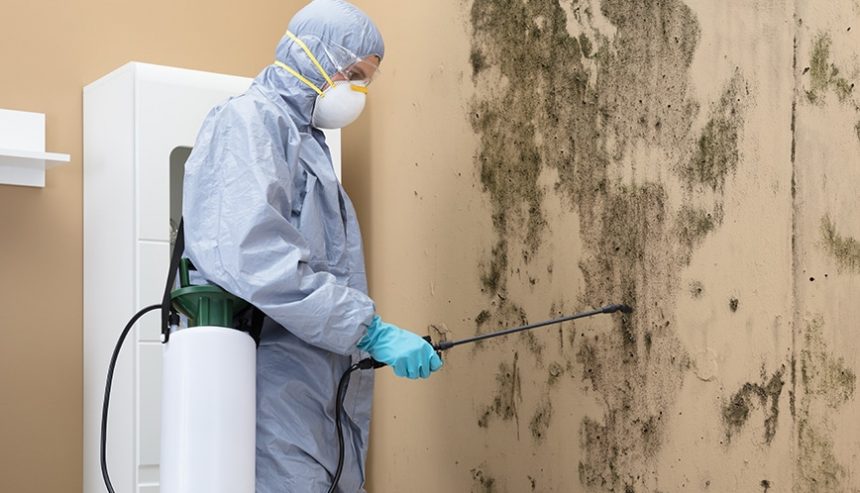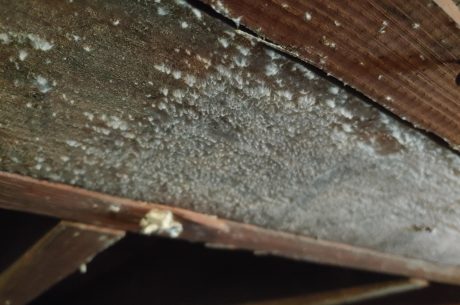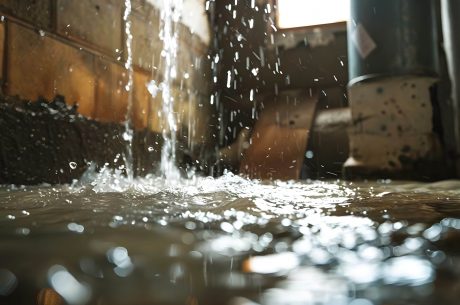Toxic black mold is one of the most dangerous types of mold that can invade your home. Scientifically known as Stachybotrys chartarum, this toxic fungus thrives in damp, humid environments and is commonly found in bathrooms, basements, kitchens, attics, and crawl spaces—especially in homes that have experienced water damage. Unlike other molds that may cause mild allergies, toxic black mold produces mycotoxins, which can trigger serious health issues, including respiratory problems, skin irritation, chronic fatigue, and even neurological symptoms when inhaled over time (CDC).
What makes toxic black mold even more dangerous is that it often grows in hidden areas, such as inside walls, under carpets, in air ducts, or within insulation, making it difficult to detect until it has already spread extensively. Left untreated, mold infestations can weaken your home’s structure, contribute to poor indoor air quality, and create hazardous living conditions for you and your family (EPA).
Table of Contents
Understanding how to identify, remove, and prevent toxic black mold is essential for maintaining a safe, healthy home environment. In this comprehensive guide, we will cover:
- How to spot toxic black mold in your home
- The health risks associated with exposure
- Why professional mold remediation is the safest approach
- How to keep your home mold-free permanently
If you suspect mold in your home, taking swift action is crucial. PuroClean of Layton specializes in professional mold removal and remediation, ensuring that your home is safe, mold-free, and fully restored. Read on to learn everything you need to know about toxic black mold, and when it’s time to call in the experts.
What is Toxic Black Mold and Why is it Dangerous?
Toxic black mold isn’t just another type of household mold. Unlike common mildew, this species releases mycotoxins, microscopic airborne toxins that can lead to serious health complications when inhaled or touched (CDC). Prolonged exposure to toxic black mold has been linked to:
- Severe respiratory issues like asthma flare-ups, chronic coughing, and wheezing
- Neurological symptoms, including dizziness, headaches, and memory loss
- Skin irritation, rashes, and eye inflammation
- Fatigue and immune system suppression
For individuals with pre-existing conditions, such as asthma, allergies, or compromised immune systems, exposure to mold can worsen symptoms significantly.
The longer mold is left untreated, the more damage it does—not just to your health, but also to your home’s structure.
How to Identify Toxic Black Mold in Your Home
Mold loves moisture, making any damp or water-damaged areas prime real estate for its growth. But how do you spot it before it becomes a bigger issue?
- Visual Signs of Toxic Black Mold – Toxic black mold appears as dark green or black clusters, often with a slimy or wet texture when actively growing. Over time, it may dry out, taking on a powdery appearance. Unlike the common gray or white mildew, toxic black mold is distinctly dark and spreads in irregular patterns. It thrives on wood, drywall, insulation, carpet, and other organic materials, particularly in areas that have been exposed to moisture or water damage.
- A Strong Musty Odor – Even if you don’t see mold, you may smell it first. A persistent musty or earthy odor is often a sign of hidden mold growth—behind walls, inside flooring, or even within your HVAC system (EPA).
- Health Symptoms of Mold Exposure – If you or your family members experience ongoing allergy-like symptoms inside your home—but feel better when you leave—it could be due to mold spores circulating in the air. Symptoms like persistent coughing, congestion, headaches, and itchy skin can indicate prolonged exposure. If multiple people in your home are suddenly experiencing these symptoms, toxic black mold may be the cause.

Why You Should Never Attempt DIY Mold Removal
It’s tempting to grab a bottle of bleach and a scrub brush, but DIY mold removal is rarely effective—and can actually make the situation worse. Here’s why:
- Disturbing Mold Releases More Spores – Mold spores spread like wildfire when disturbed. Scrubbing visible mold without proper containment can cause it to release thousands of microscopic spores into the air, making the problem even harder to control.
- Bleach Doesn’t Kill Mold at the Root – A common myth is that bleach kills mold, but this isn’t entirely true. While it may remove surface stains, bleach doesn’t penetrate porous materials like drywall or wood. Mold will continue growing beneath the surface, returning even stronger.
- You Can’t Always See the Full Extent of the Damage – Mold hides where you can’t see it. If you only clean the visible spots, you’re missing the bigger problem lurking in walls, ceilings, insulation, and air ducts. Without professional detection, mold can spread unnoticed and cause structural damage.
- Mold Can Be Hazardous to Your Health – Without proper protective gear and containment measures, exposing yourself to mold spores during cleanup can lead to serious health reactions—especially if you have asthma, allergies, or respiratory conditions. For severe mold infestations, the safest and most effective solution is professional mold remediation.
How PuroClean of Layton Safely Removes Toxic Black Mold
At PuroClean of Layton, we use industry-leading mold remediation techniques to eliminate mold at its source. Our expert technicians follow a thorough, multi-step process to ensure complete mold removal without contaminating other areas of your home.
Step 1: Comprehensive Mold Inspection
We begin with advanced moisture detection technology to locate hidden mold growth. Even if mold is inside your walls, under carpets, or in air vents, we find and address the source of the problem.
Step 2: Containment & Air Filtration
To prevent mold spores from spreading, we use advanced containment barriers and HEPA air filtration systems. This ensures mold is removed safely without contaminating clean areas.
Step 3: Professional Mold Removal & Surface Cleaning
Our team removes all mold-contaminated materials, cleans and disinfects surfaces, and uses specialized antimicrobial treatments to prevent future growth.
Step 4: Structural Drying & Moisture Control
Because mold thrives in moisture, we eliminate the root cause by drying affected areas completely. Our team also identifies and repairs leaks or ventilation issues to prevent mold from coming back.
Step 5: Restoration & Prevention
Once the mold is removed, we restore damaged walls, flooring, and ceilings to return your home to its pre-loss condition. We also provide expert guidance on keeping your home mold-free.
Don’t Let Toxic Black Mold Take Over Your Home—Call the Experts!
Toxic black mold is more than just an unsightly nuisance—it’s a serious health hazard that can compromise your indoor air quality, weaken your home’s structure, and put your family’s well-being at risk. Ignoring mold growth or attempting DIY removal can lead to dangerous exposure, incomplete cleanup, and recurring infestations. The safest and most effective way to handle toxic black mold is to call in professional mold remediation experts who can eliminate the problem at its root.
At PuroClean of Layton, we specialize in fast, thorough, and safe mold removal, ensuring that your home is restored to a clean, healthy environment. With our advanced technology, industry expertise, and proven remediation methods, we identify, contain, and eliminate mold growth—preventing it from coming back.
If you suspect toxic black mold in your home, don’t wait for it to spread. Take action today! Contact PuroClean of Layton for a professional mold inspection and removal service. We’ll help you breathe easier, live safer, and restore your home to its best condition.
Call us now at (801) 989-5554 for Expert Remediation Services
🌐 Visit our website to learn more about our expert mold remediation services.




 PuroClean of Layton
PuroClean of Layton